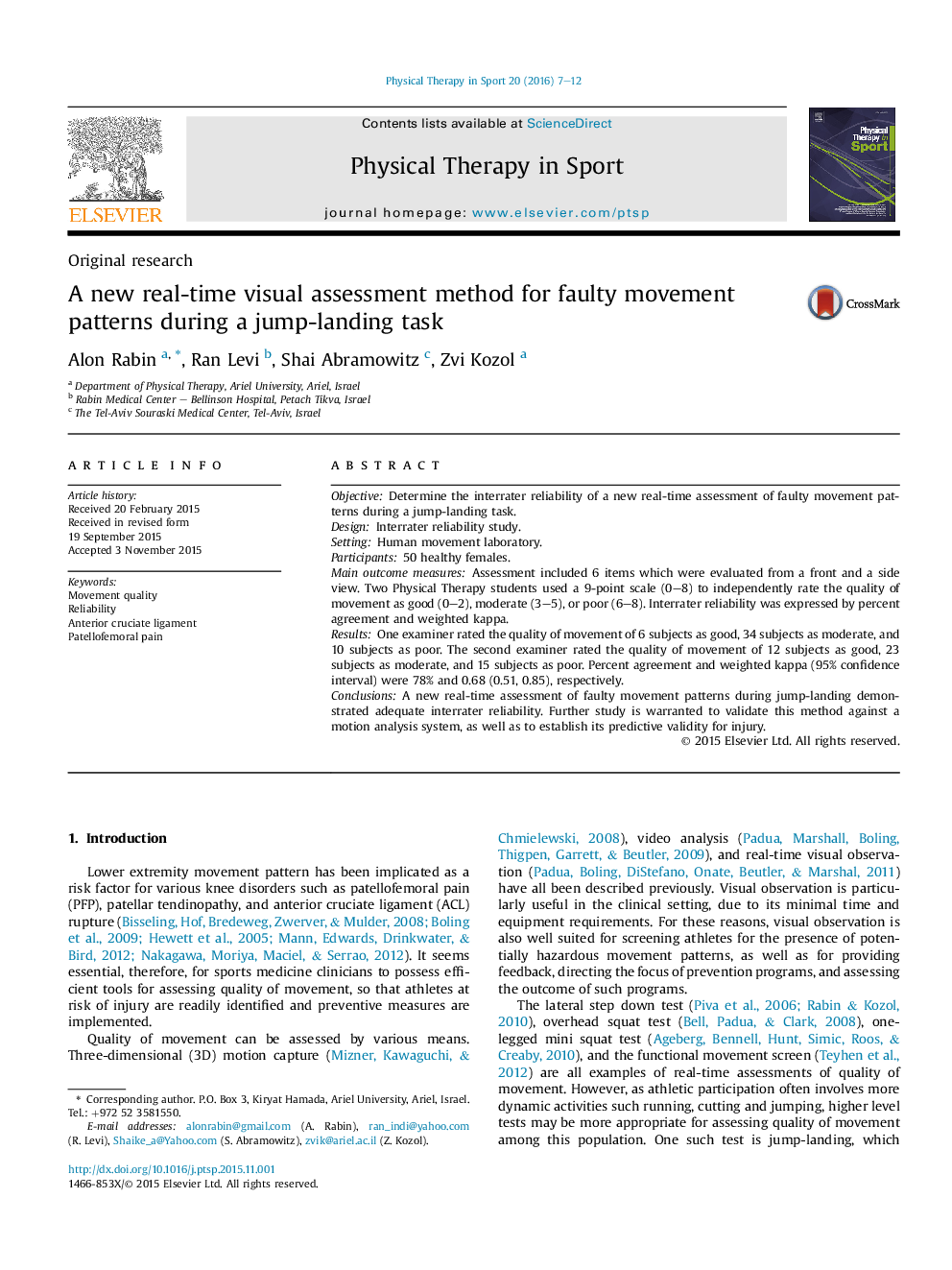| Article ID | Journal | Published Year | Pages | File Type |
|---|---|---|---|---|
| 2709731 | Physical Therapy in Sport | 2016 | 6 Pages |
•A new real-time assessment of quality of movement during jump-landing is reliable.•Validation of this assessment against 3-dimensional motion analysis is needed.•The predictive validity for lower extremity injury should be ascertained.
ObjectiveDetermine the interrater reliability of a new real-time assessment of faulty movement patterns during a jump-landing task.DesignInterrater reliability study.SettingHuman movement laboratory.Participants50 healthy females.Main outcome measuresAssessment included 6 items which were evaluated from a front and a side view. Two Physical Therapy students used a 9-point scale (0–8) to independently rate the quality of movement as good (0–2), moderate (3–5), or poor (6–8). Interrater reliability was expressed by percent agreement and weighted kappa.ResultsOne examiner rated the quality of movement of 6 subjects as good, 34 subjects as moderate, and 10 subjects as poor. The second examiner rated the quality of movement of 12 subjects as good, 23 subjects as moderate, and 15 subjects as poor. Percent agreement and weighted kappa (95% confidence interval) were 78% and 0.68 (0.51, 0.85), respectively.ConclusionsA new real-time assessment of faulty movement patterns during jump-landing demonstrated adequate interrater reliability. Further study is warranted to validate this method against a motion analysis system, as well as to establish its predictive validity for injury.
